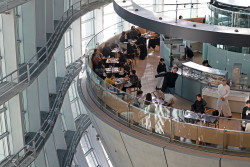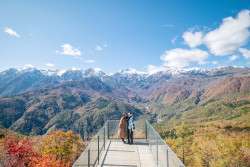
September 24, 2009
Forest Conservation in Tsukuba
Is a new housing tract “green development” or short-sighted destruction?
By Metropolis
Originally published on metropolis.co.jp on September 2009

Photo by Thomas Mayers
Tsukuba has always been a favorite destination for Tokyoites in search of an autumn escape. The end of summer brings with it the famous fireworks festival Tsuchiura, the Ozagawari festival at the Tsukuba-san shrine and, of course, the spreading reds and golds of the fall foliage. But if a local developer has its way, there may soon be less of these natural treasures to love.
The Nakane Konda-Dai Development Project aims to create a housing tract in Tsukuba’s Kamisakai and Konda districts, which are among the last remaining natural areas of land in the city. Despite being surrounded on all sides by manmade sprawl, the 200 hectares of woods are home to a healthy ecosystem, with abundant species of small mammals and birds. They are also the site of archeological excavations that have uncovered many relics from the late Jomon Period (2000-400 BC).
The Nakane Konda-Dai project, which began in 2004 in partnership with the Metropolitan Intercity Railway Company, is being billed as a “green” development because it incorporates agricultural plots and public parks in addition to residential and business areas.
But according to local musician and conservationist Avi Landau, the project is anything but green. “The landowner is trying to promote what he is doing—that is, cutting down some of Tsukuba’s last remaining woods and covering up its ruins—as ‘environmentally friendly development,’” he says. “[It’s] slated for a complete bulldozing.”
Landau, a native New Yorker, first got involved with local conservation efforts when he discovered that protective nets which had been set up to protect lotus-root crops were causing a mass kill-off of birds around Lake Kasumigaura.
“What I found there literally left me sleepless,” he says. “The more I tried to do something about the situation, the more I realized how [many] Japanese people, no matter how they actually felt about it, would in no way question the powers by speaking out or taking action. I also found out how skillful the authorities themselves were in evading responsibility.”

Photo by Thomas Mayers

Courtesy U.S. Fish and Wildlife Service
It appears that the current project is progressing in a similar fashion. Landau believes that the developers have chosen to rechristen the Konda-Kamisakai area “Nakane Konda-Dai” so that prospective buyers won’t associate it with the archeological excavations.
“Who wants to live on top of valuable ruins? In the promotional material for the houses, there is no mention of either the ruins or the numerous graves which once stood on the site,” he says.
Of course, some might say that there is no sinister motive behind the name beyond good salesmanship. But another aspect of the project is more troubling.
The local woods are the annual breeding ground of the vulnerable Japanese goshawk. Local resident Kayoko Takahashi, who had been observing a breeding pair of the birds from her house at the edge of the woods, informed government officials of their presence and called for a reevaluation of the project. A few days later, according to Landau, a bulldozer from one of the contractors came and pushed down the trees. Luckily, they missed the one that the nest was actually in, and Takahashi caught the entire thing on tape, prompting the prefectural government to call a three-year halt to the project.
Thus, the woods have won a temporary reprieve, and Landau hasn’t lost hope that some of them can be saved.
“Most of Kamisakai has already been cleared for the 300 homes which will go up there. Thanks to Takahashi-san’s efforts, the rest of so-called Nakane Konda-Dai has not been touched. There is still some chance that, if everyone joins forces, we can save a lot of it.”
To find out more about the Nakane Konda-Dai Development Project website. To get involved with conservation efforts, email Avi Landau at avi@tora.email.ne.jp.







